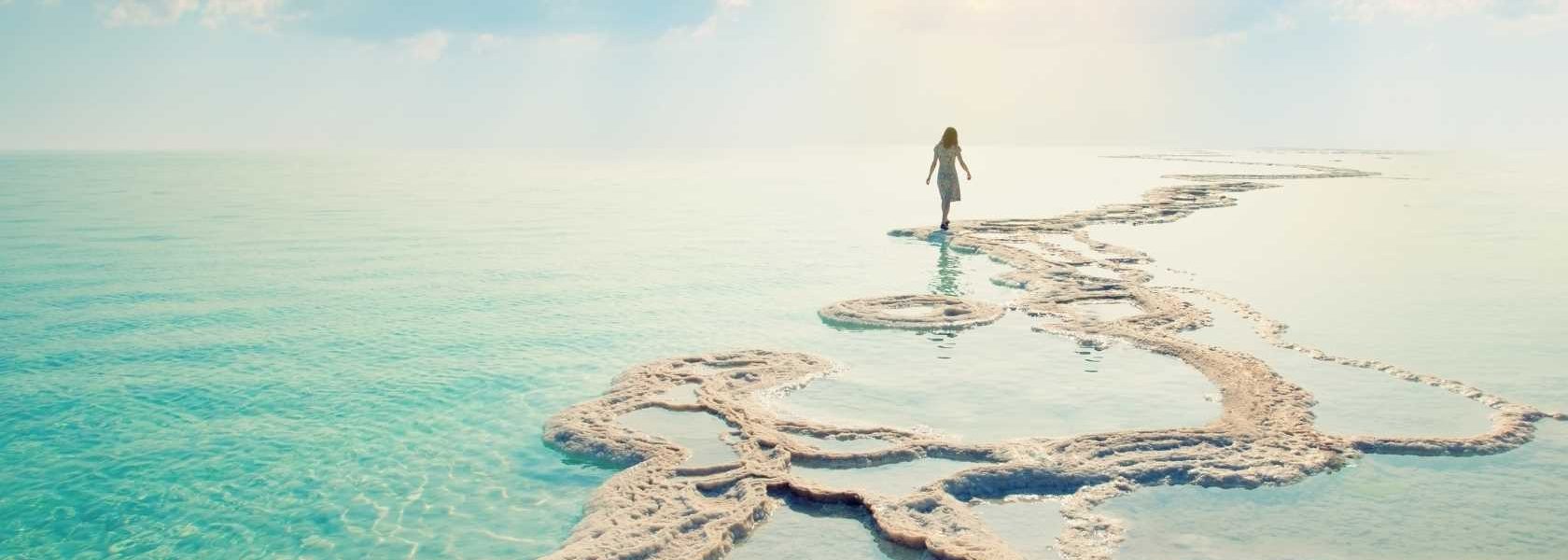The Dead Sea is a salt lake bordered by Jordan to the east and Israel and Palestine to the west. Its surface and shores are 430.5 metres, (1,412 ft), below sea level making it earth's lowest elevation on land. The Dead Sea is 304 metres, (997 ft), deep. It is the deepest hypersaline lake in the world with 34.2% salinity, it is 9.6 times as salty as the ocean and one of the world's saltiest bodies of water. This salinity makes for a harsh environment in which plants and animals cannot flourish, hence its name. The Dead Sea is 50 kilometres (31 miles) long and 15 kilometres (9 miles) wide at its widest point. It lies in the Jordan Rift Valley and its main tributary is the Jordan River.
The Dead Sea has attracted visitors from around the Mediterranean basin for thousands of years. It was one of the world's first health resorts (for Herod the Great), and it has been the supplier of a wide variety of products, from asphalt for Egyptian mummification to potash for fertilizers. People also use the salt and the minerals from the Dead Sea to create cosmetics and herbal sachets.
The Dead Sea water has a density of 1.24 kg/litre, which makes swimming similar to floating.

The Dead Sea is unique due to its high concentrations of salts and minerals, particularly magnesium, sodium, potassium and calcium.
Symptoms of skin disorders such as psoriasis, eczema and acne can be controlled by using Dead Sea mud. Its rich mineral content accelerates natural exfoliation and restores your skin's pH balance. Dead Sea mud is not a permanent healer, but regular use of it can provide physical relief and keep your skin disorder under control.